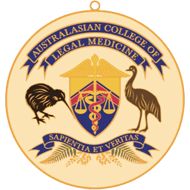Digital Rape - is it associated with evidence of trauma?
Posted by Dr Mike O'Connor
on 28 January 2014
Recently I was asked to provide medico-legal expert evidence in a case of digital sexual assault. It was pointed out to me by the Defence that one publication cited a detected genital injury rate after digital sexual assault of in excess of 80%.
However the American publication involved:
1. Colposcopic examination with tissue dyes such as toluidine blue (both of these techniques substantially increase the detection rate)
2. Short time periods before forensic examination (<72 hours after the alleged incidents)
Linda Rossman,Jeffrey S Jones,Chris Dunnuck,Barbara M Wynn,Michelle Bermingham (2004) ‘Genital trauma associated with forced digital penetration’ 22 Am J Emerg Med 101-104
However the American publication involved:
1. Colposcopic examination with tissue dyes such as toluidine blue (both of these techniques substantially increase the detection rate)
2. Short time periods before forensic examination (<72 hours after the alleged incidents)
For that reason cases where the examination has taken place > 72 hours after the alleged assault the incidence of injury is likely to be much lower. This is due to the remarkable healing potential of the female genitalia. Factors such as long sharp fingernails of the assailant or friable genital tissues, such as those in postmenopausal or prepubescent females may increase the likelihood of a genital injury being detected.
The common sites of injury in the US paper were the fossa navicularis, labia minora, cervix, and posterior fourchette. The most common type of injury was erythema (34%) followed by superficial tears (29%) and abrasions (21%).
Linda Rossman,Jeffrey S Jones,Chris Dunnuck,Barbara M Wynn,Michelle Bermingham (2004) ‘Genital trauma associated with forced digital penetration’ 22 Am J Emerg Med 101-104
) Author:Dr Mike O'Connor
Author:Dr Mike O'ConnorAbout: Dr Mike O'Connor is an obstetrician and gynaecologist based at Kogarah in Sydney's southern suburbs.
Dr O'Connor is the current Chairman of the Medical Advisory Committee at St George Private hospital. He also has a Masters in Health Law and is a Fellow of the Australasian College of Legal Medicine and acts as an expert witness in medico legal issues.








